Home / Interview with Dr Apinan Poshyananda, curator of the Bangkok Art Biennale
Share this article:

Prof Dr Apinan Poshyananda, Image courtesy of Bangkok Art Biennale. Photo by Arina Matvee.
2024 marks the fourth edition of the Bangkok Art Biennale (BAB), founded in 2017 with the aim of positioning Bangkok as a leading art destination in Southeast Asia. At the time of its inception, one of the city’s main art spaces faced an uncertain future but the tenuous position of contemporary art in Thailand witnessed a remarkable turnaround in the next few years. In 2018, not one but three biennales opened in Thailand, with two in Bangkok alone (the BAB, as well as the independently-organised Bangkok Biennial) and the third in Krabi, organized by Thailand’s Ministry of Culture. All this activity, alongside the inauguration of new art spaces and the flurry of other contemporary art events — such as Khonkaen Manifesto and the Ghost new media and performance art festival series — propelled the Thai contemporary art scene into the spotlight.
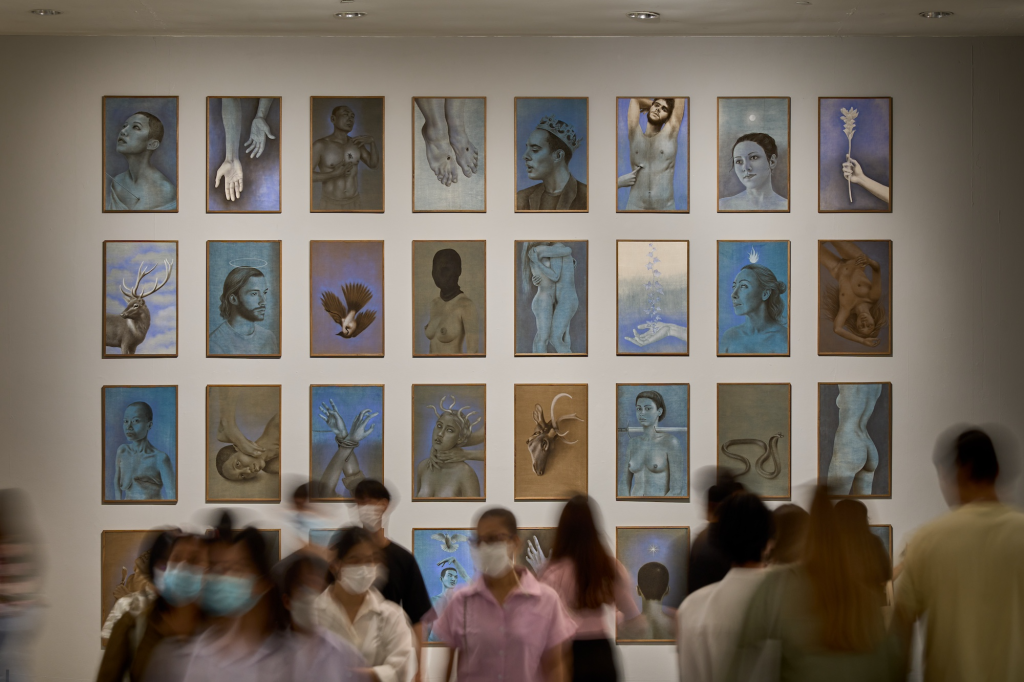
Myrtille Tibayrenc, Iconostasis, 2022. Oil on dyed cotton mounted on wood. 80 x 50 cm each. Supported by the French Embassy in Bangkok. Courtesy Bangkok Art Biennale. Photo by Preecha Pattaraumpornchai.
Each edition of the BAB has sought to address the zeitgeist, reflecting on global issues through a Thai-inflected perspective. The upcoming edition for instance, speaks to the urgencies and challenges of our time, in particular humanity’s relationship with the natural world. Titled Nurture Gaia, the BAB’s theme makes reference to the figure of the primordial earth mother-goddess who appears throughout several cultures: among her many names are Gaia, Parvathi, and Phra Mae Thorani.

Guerreiro do Divino Amor, Roma Talismano, 2023 (still). Courtesy of the artist.
ART SG speaks with Dr Apinan Poshyananda who has curated all four editions of the BAB, to take stock of how far the Biennale has come, and what to look out for in the upcoming edition which opens 24 October 2024.
Dr Apinan, this will be the fourth edition of the BAB that you are helming. As you look back on the BAB’s journey, what would you single out as some of its notable achievements, and what are some challenges that remain? What lies ahead for the BAB, for example, areas in which it could evolve or change?
Dr Apinan Poshyananda (AP): The BAB began in 2018, continued in 2020 during the most challenging time of Covid, returned in 2022, and this year will be its fourth edition. I think each one has given us different experiences and challenges, whether it’s changing politics, a threatening pandemic, or expectations and demands from people about how each edition can improve or act as a catalyst for gaining exposure and recognition for Bangkok and Thailand. The idea of the Bangkok Art Biennale has also been associated with Bangkok as a destination, in terms of tourism and attracting both tourists and art lovers to come and see the show. Naturally, that has become the case, where many feel that BAB has placed Bangkok on the art map. People are now more familiar with this international art event, and they plan to come, whether they are from the art world in the West, Oceania, or elsewhere — not only artists but also all other people in the art ecosystem.
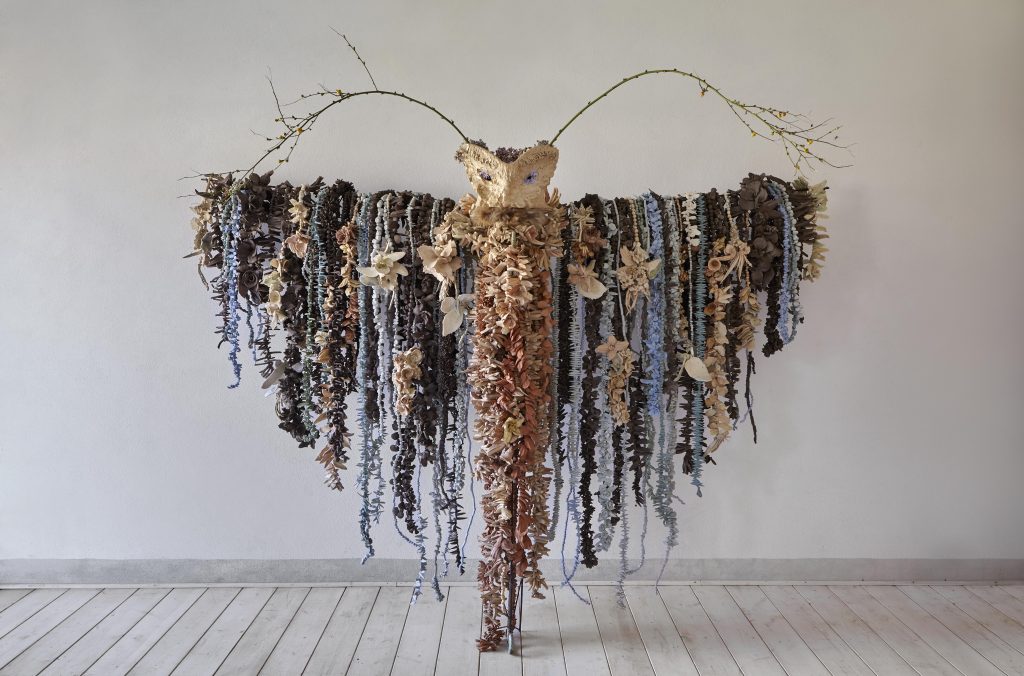
Chiara Camoni, Sister (Farfalla), 2023. Image Courtesy the Artist and SpazioA, Pistoia.
There is also synergy in the fact that the BAB alternates with the government-run Thailand Biennale. So, visitors can plan to come each year and experience art activities in Bangkok or outside of Bangkok in the provinces where the Thailand biennale is held. For example, the previous edition was in Chiang Rai, and the next one will be held in Phuket.
I think BAB has now become an institution. We have contributed to the art ecosystem in Thailand, by creating art workers, curators, and people who specialize in contemporary art. We’ve also built networks throughout the region, and facilitated opportunities for both established and young artists to display their works. In this way, Bangkok has emerged as a major node in Asia for contemporary art activities.

Image courtesy Bangkok Art Biennale. Photo by Arina Matvee.
What lies ahead for BAB? More and more people are looking at Bangkok as the next art destination within Asia. When we go to biennales or art fairs, we hear people talking about BAB more and more. We feel that at least we can stand our ground while working with our partners, not only in Thailand but within the region. The challenge remains, and we want to keep the spirit of Bangkok Art Biennale in such a way that it is independent and open to all content. We take pride in not censoring the artworks shown at BAB, even as we recognize that other places do suffer from this imposition.
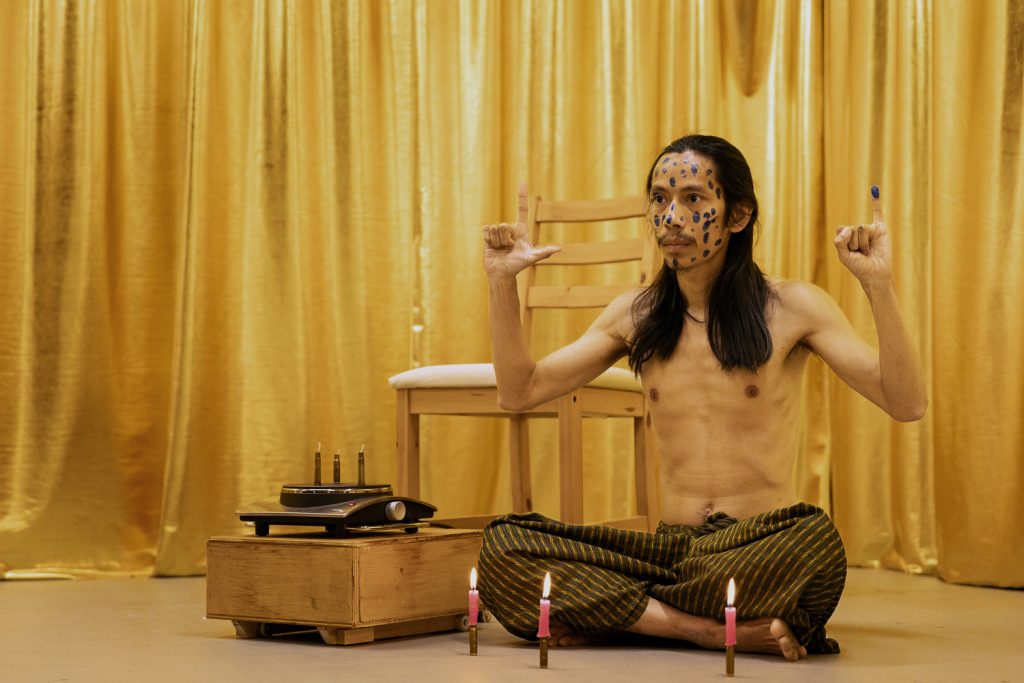
Moe Satt, Pinky Say Something, 2024
In terms of funding, we are now in a much better place, with more sponsors coming on board. We no longer struggle as much with financial support, which many biennales face. As a corporate institution, we’re getting more partners and friends who recognize the importance of this international art event. We are also going beyond Thailand — right now, we are part of the 60th Venice Biennale, as a Collateral Event, displaying artworks from Southeast Asian artists in one of the grandest arenas in the world. We feel that we’ve matured and gained experience, not just in organizing international events in Bangkok but also taking the Bangkok Art Biennale abroad.

Chitti Kasemkitvatana, Our Place in Their World, 2024
The second question pertains to how the theme for this year’s BAB was derived. The deleterious impact of the Anthropocene is global in scope, and this issue has informed numerous major exhibitions and Biennales around the world. Was there a reason why you felt it important to take on this theme in the BAB, in addition to the numerous other expositions of art that have done so, and are there any unique perspectives that the BAB / a Biennale located in Bangkok can bring to this issue?
AP: I think there are a lot of concerns, naturally, about the world collapsing. This is almost universal. The hate and fear that go hand in hand — these have become major issues in the world we live in. Environmental degradation has also been getting worse and worse. Since 2018, with the first Bangkok Art Biennale, we’ve seen that the world has not improved. The Anthropocene is signaling that it affects us all. The themes we’ve chosen since our first edition — whether it be Beyond Bliss, Escape Routes, CHAOS : CALM, and now Nurture Gaia — demonstrate a clear progression. It’s important that we don’t just focus on the negative side, but we also give hope, as art can express many things. It can be anti-political, pro-environmental, or related to activism. We provide space for artists to work in temples, contemporary spaces, or public areas, allowing them to express their messages within the context of each year’s theme. In this way, we feel that even though other biennales have touched on similar themes, we will still bring fresh ideas and perspectives. If the world continues in this state, artists will not shy away from addressing these serious issues.

Bounpaul Phothyzan, Control, 2013. Copyright Bounpaul Phothyzan
Bangkok is a huge city with a rich heritage. From the beginning, we wanted to give artists the opportunity to work within Bangkok’s unique environment. Thai artists, in particular, are given the chance to display their works in places like temples and heritage sites they’ve never shown at before. When visitors come to Bangkok, they experience not only the art but also the cosmopolitan life, and at the same time, they can discover little pockets of the city that feel like a time warp, where some areas haven’t changed at all. The more you discover the city, the more you realize how much Bangkok can offer. And this has been at the heart of our work for the BAB throughout all editions.

Yee I-Lann, hello from the outside, 2019 & PANGKIS, 2021. Installed at Wat Prayoon for BAB 2022. Image courtesy of the artist and Bangkok Art Biennale
Bangkok draws people who want to experience life in many different ways. From vibrant nightlife and the allure of ‘Bangkok noir,’ to a city that’s open and welcoming to the LGBTQ+ community, it’s all here. And with growing freedom of expression — whether in terms of art, ideas, or lifestyle — I think Thailand, and especially Bangkok, stands out in the region. Our neighbors envy the freedom we have here.
How do the works in this edition of BAB resonate within the local and / or Southeast Asian context?
AP: I think it relates very much. The themes of nurturing Gaia, femininity, motherhood, and local beliefs are prominent. A lot of people associate Thailand with Buddhism, but in reality, Thailand embraces many beliefs — whether it’s Islam, Catholicism, Protestantism, or even animism and spiritualism. These multi-layered beliefs resonate in the artworks of people from the region. Southeast Asia is very much a multicultural mix, and this edition focuses on Mother Earth and the maternal comfort of the Mother Goddess.
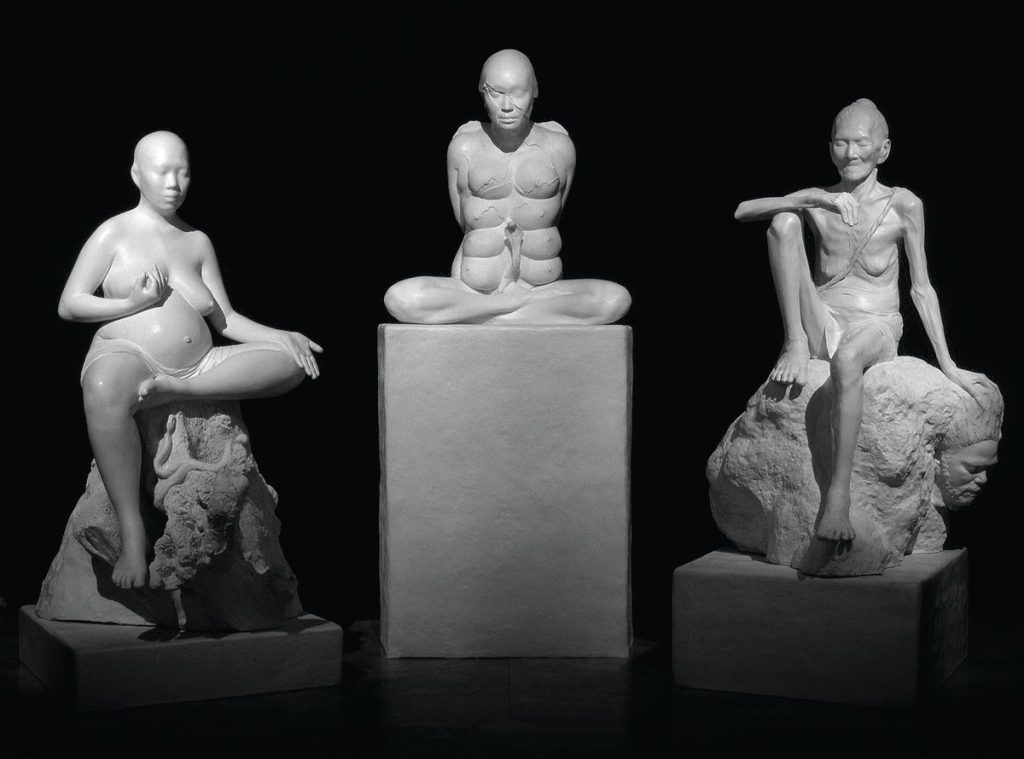
Agnes Arellano, Three Buddha Mothers (created for Traditions/Tensions, Asia Society, New York 1996). Courtesy of the artist.
What are some of the highlights to look out for at this edition of the BAB?
AP: This year, we have 11 venues, which presents a huge logistical challenge. We are focusing increasingly on site-specific pieces, with artists working in temples, heritage sites, or public spaces. They need to understand Bangkok and how their work will be displayed in these unique environments. One highlight I would like to mention is a work by Thai artist Haritorn Akarapat, a newly commissioned installation sited at Wat Arun. We’ve also been fortunate to work with the National Museum of Thailand this year, displaying prehistoric artifacts alongside works by internationally renowned artists like Louise Bourgeois and Joseph Beuys, creating a dialogue between historical and contemporary works. We’ll also be showcasing the permanent works of Anish Kapoor and Tony Cragg at One Bangkok. Notably, we are excited to be working with young artists who are getting the chance to exhibit alongside established international names. Many of them have just graduated, or are still studying, so it’s a huge opportunity for them. Additionally, we continue to run the Open Call, where artists from around the world can submit proposals, which enriches the event even further. It’s unpredictable for us as curators, but that’s what makes it exciting.
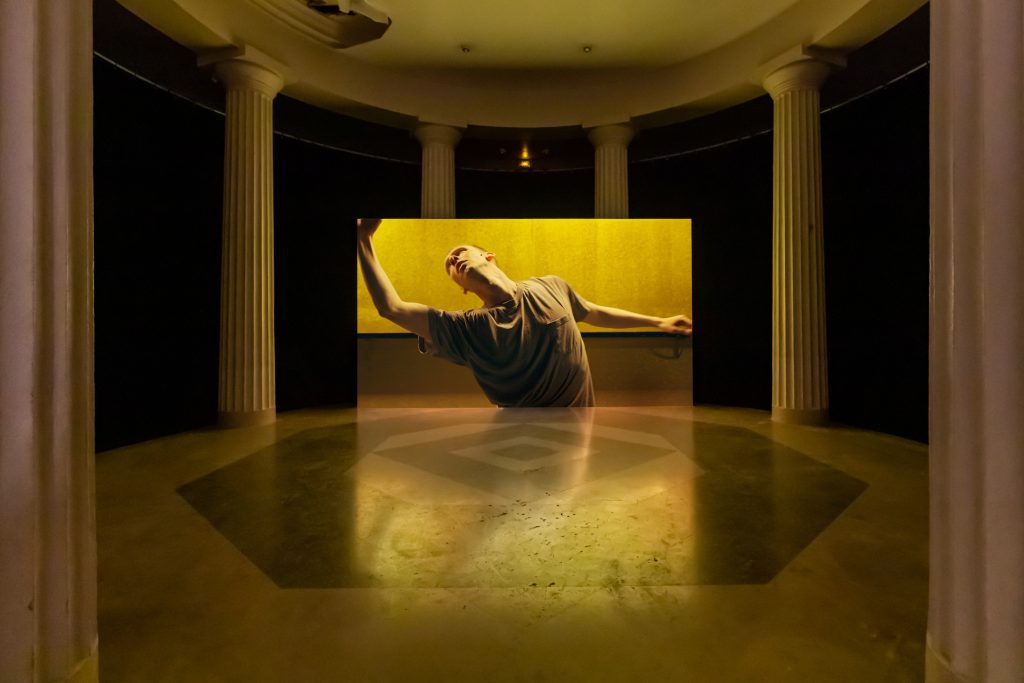
Young-jun Tak, Wish You a Lovely Sunday, 2021. Courtesy of the artist
ABOUT THE AUTHOR: TAN SIULI
Tan Siuli is an independent curator with over a decade of experience encompassing the research, presentation and commissioning of contemporary art from Southeast Asia. Major exhibition projects include two editions of the Singapore Biennale (2013 and 2016), inter-institutional traveling exhibitions, as well as mentoring and commissioning platforms such as the President’s Young Talents exhibition series. She has also lectured on Museum-based learning and Southeast Asian art history at institutes of higher learning in Singapore. Her recent speaking engagements include presentations on Southeast Asian contemporary art at Frieze Academy London and Bloomberg’s Brilliant Ideas series.

Share this article: